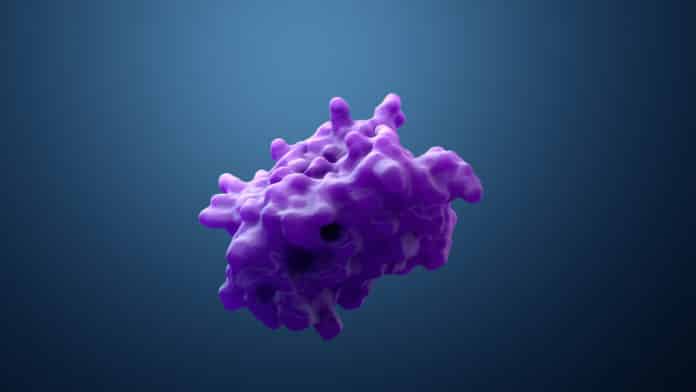First Artificial Enzyme with Non-Biological Groups – University of Groningen
By adding two abiological catalytic components: unnatural amino acid and a catalytic copper complex, a non-enzymatic protein was turned into a new, artificial enzyme by the scientists at the University of Groningen. Using two non-biological components, this is the first time an enzyme has been created. To achieve catalysis that is normally outside the realm of artificial enzymes, this study demonstrates that such a synergistic combination is a powerful approach.
Operating under mild conditions, enzymes are natural catalysts. When compared to the industrial chemical catalysis which may require high temperature and pressure and toxic solvents or metals, enzymes are an attractive alternative for industrial catalysis. However, natural enzymes cannot catalyze all chemical reactions. One option is to modify the existing enzymes while another valuable option could be creating new enzymes, says Gerard Roelfes, the University of Groningen Professor of Biomolecular Chemistry.
He says, “To catalyze specific reactions, the natural enzymes should evolve. Devolving of the enzyme is needed for adapting, which is why we pioneered the creation of new unnatural enzymes.” He created the first enzyme using unnatural amino acid as a catalytic group in 2018. This enzyme was a non-enzymatic protein, the bacterial transcription factor LmrR, which could form non-biological hydrazone structures after the insertion of the unnatural amino acid p‑amino phenylalanine.
Roelfes and Zhi Zhou, his postdoc, made use of the same LmrR protein this time. To this, they added two abiological catalytic components to it: one was a copper-containing complex and the other was the same unnatural amino acid p‑amino phenylalanine.
Through supramolecular bonds, the copper-containing complex attaches itself to the doughnut-shaped LmrR protein. Roelfes explains, “Its interaction with the protein determines its position. In order to create an active site, we determined where inside the protein, the p-amino phenylalanine should be inserted, from this position. An aniline side chain is the catalytic part of this amino acid. I knew from my experience in organic chemistry that the aniline chain has potential in catalysis and combining it with copper catalysis would be possible.” The adapted protein seemed to be a very selective catalyst for the Michael addition when the novel enzyme was constructed.
Roelfes says that “This was a proof of principle study. With standard techniques such as directed evolution, this enzyme could be improved as it is not yet fast enough for practical use. The possibility to create a new enzyme using two abiological catalysts is shown in the experiment. In a similar way, other kinds of novel catalytic enzymes can be created.”
Nature Catalysis published this study.
First Artificial Enzyme With Non-Biological Groups – Source



